Tags
Related Posts
Share This
Inside Zozobra’s Security
I have been to Zozobra many times in my life, but never as early as 3 pm when, it turns out, the gates officially open. The first most apparent aspect of the field—as people refer to the baseball field in Fort Marcy Park, which hosts the burning of the great big white puppet of gloom—is the abundance of security moving about the place. Already the parking lots around the field are closed off, and men in neon yellow vests that read ‘SECURITY’ across their backs are monitoring the pedestrian entrance between temporary metal barricades blocking vehicles from entering. This entrance is followed by a security corridor between tables, where I am patted down (or prodded with a magic metal detector wand, depending if I end up with the woman on the right or the woman on the left who is checking my bag and my person), which spits me out at another metal fence with a narrow entrance managed by more yellow-vested people scanning tickets electronically. Finally I reach the bridge across an arroyo—another corridor—that will spit me out at… the field. But first I must stop at the bridge’s entrance where yellow-vests will cuff one of my wrists with a lime-green band which will prevent me from being accosted by more security on the inside—this is their signifier that I have entered the event by the correct process of checking and being herded along by yellow-vested security, or, more simply, that I have paid the entry fee.
Once I am finally through this series of corridors being overseen by yellow-vests, I expect to be home free—I have arrived at my destination and can relax—but the field, only spotted at this early hour with picnickers and die-hards who will be here from 3pm, when a band starts playing on a stage to the side of the puppet, until 10pm when, without delay, the puppet will burn and the crowd disperse. The majority of the clusters of bodies around the site, it seems, are, low and behold, more security personnel. The uniforms vary—some are SFPD, others are state police, a few men on horseback sport sheriff’s stars on their chests.
What I am witnessing, it turns out, is half of Santa Fe’s police force concentrated in one area in anticipation of the 20,000 people who will eventually show up.
“On Zozobra,” explains Tony Trujillo, a Santa Fe investigatory police officer, “everybody works. Everybody in the police force. Nobody gets the night off. If you’re not at Zozobra, you’re working the rest of the city.” The various clusters of police men and security officers and paramedics mulling the grounds in the afternoon heat come from the Santa Fe Fire Department, the Santa Fe Police Department, the New Mexico State Police Department, the Sheriff’s Department, and a private security company called Phoenix Security that is hired by the Kiwanis Club. There is a SWAT Team, there are plain-clothes officers, there is a person in charge of monitoring all Internet traffic concerning Zozobra, there are even two snipers posted on top of Fire Station 1, which is conveniently located at the edge of Fort Marcy Park. That same fire station is converted, for the day, into the Incident Command Center, where a dispatch center is set up with computers tracking and monitoring all Zozobra related radio traffic. Next to the fire station there are two busses with cameras set up on their roofs transmitting live footage to the room in the fire station where dispatchers monitor the radio communications. In one a police captain and lieutenant oversee the Incident Command Center, while the other is dedicated to the bomb-squad; the latter contains a bomb robot and a kevlon blanket, which is essentially a blanket made from the same material as a bullet-proof vest that would contain the impact of a bomb if it were found before it exploded.
“Zozobra,” says Ken Martinez, the director of the Santa Fe Regional Emergency Communications Center, “is never old hat.” Indeed, Santa Fe’s police force is being put to use within and outside of Zozobra’s organized setting. As Celina Westervelt, the SFPD Public Information Officer, shows me around the converted fire station, she receives news that there are three bears roaming around the east side of Santa Fe. The bears will be handled by the search and rescue members who are not present at Zozobra—as Trujillo said, nobody is off duty this Thursday.
The organizing of these extensive levels of security is intricate. One officer, a Zozobra first-timer, explains that they received a sixty-page brief weeks before Zozobra. The officers involved are briefed at 2pm, before the gates open, and again at 4pm. Communication is key for an event involving so many people—hence the importance of a dispatch center located on site.
Zozobra is a headache in the opinion of Trujillo, who is working his twenty-ninth this year. Still, he emphasizes the importance of the intricate and ample planning and involvement of the police force.
“It’s all those people coming at you,” he says, “that’s really more to deal with than most people would think. It’s dangerous, he says, and it took a murder to make people realize that.”
Trujillo references a murder that occurred in 1997 on the Plaza after Zozobra. The homicide resulted in the moving of Zozobra from a Friday to a Thursday night. Trujillo says that Zozobra hasn’t been so wild since the day of the week was changed, but he still looks pre-emptively exhausted by the thought of managing throngs of people, many of whom are drinking copiously, pushing and shoving as they scream for their glooms to be burned away.
A security guard for Pheonix Security, the private company hired by the Kiwanis Club, standing at the front of the fence separating the crowd from the giant puppet is unperturbed by his position where, according to Trujillo, there is the largest amount of risk for injury. When asked if he’s worried about people shoving up against the fence, the security guard, who identifies himself only as, “Perry, that’s as much as you’re gonna get,” says that if somebody were injured here, he would just do his job and get them out as fast as possible—be that through radio communication with paramedics or by helping to remove them himself.
“It’s pretty well organized,” he says, keeping his calm. “There are certain controlled areas—there are more people here keeping the place under control than most people think.”
This seems, after exploring the extent of the security presence on and surrounding the field, to be an understatement.
For some, however, being involved in Zozobra’s meticulous security plan is less grave. The two paramedics at the ambulance station explain that they worked Zozobra voluntarily.
“Our ambulance is totally stripped down,” explains Mike Harcharik, a paramedic with the SFFD, gesturing towards the empty shelves that are normally filled with equipment. “Basically all we do this evening is hand out stickers and band-aids.”
The ambulance has, besides free pencils and stickers, a general first aid kit, a very fancy defibrillator, and two paramedics with their own station to communicate to the dispatch center. If anybody is seriously hurt, these two paramedics are in charge of calling to have them removed and taken to the hospital.
“Seriously,” concedes Harcharik, “I’ve worked Zozo for the last five years and the most serious thing I’ve seen is that some guy electrocuted himself one year while he was nailing in a fencepost. And that was just while they were setting up!”
As I walk back out onto the field, which by now is filling up with more families and early spectators, I am hyper-aware of the movement of men in uniform throughout the field, and curious which of the t-shirted men in my periphery could be undercover cops. The plethora of uniform which normally seems extraneous to me when I show up to Zozobra as a civilian suddenly seems, if not totally justified, at least to be a functioning mass with a purpose. As one volunteer for the Amateur Radio Emergency Service located on the field said jovially, “Well, I hope you won’t be needing our assistance this evening, but if you do, we’re most certainly here to help.”






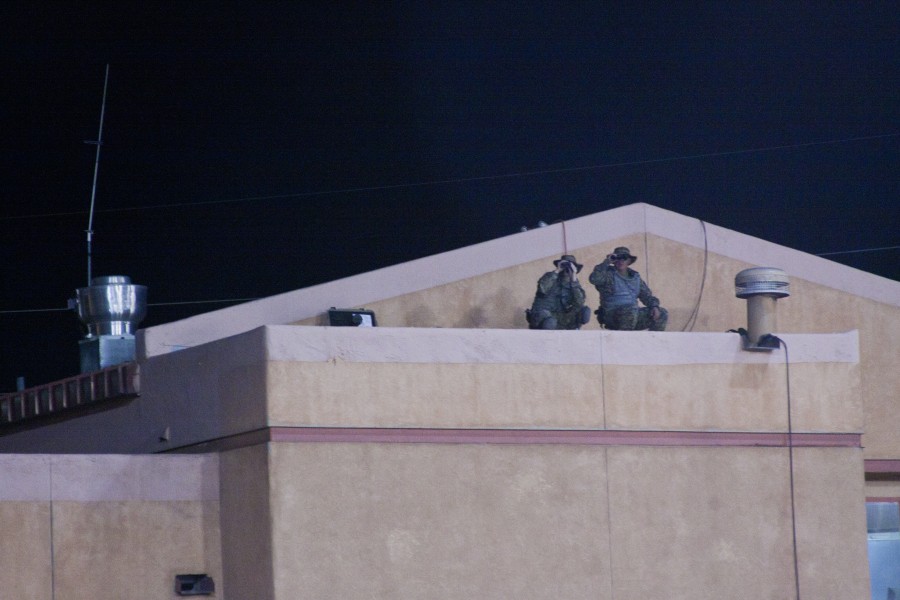
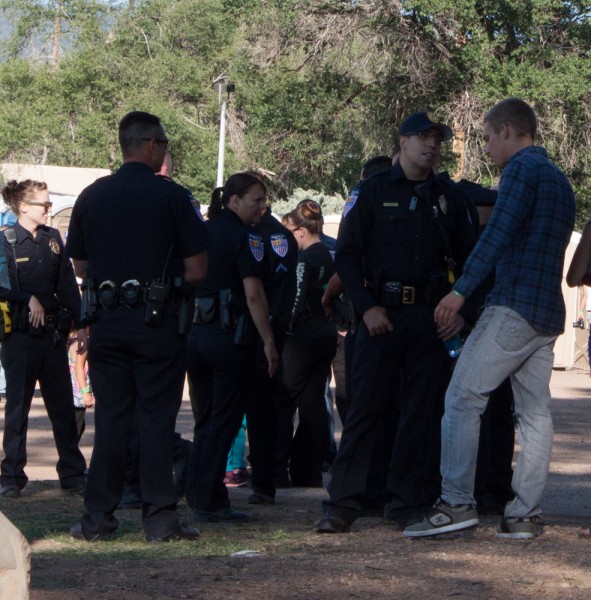
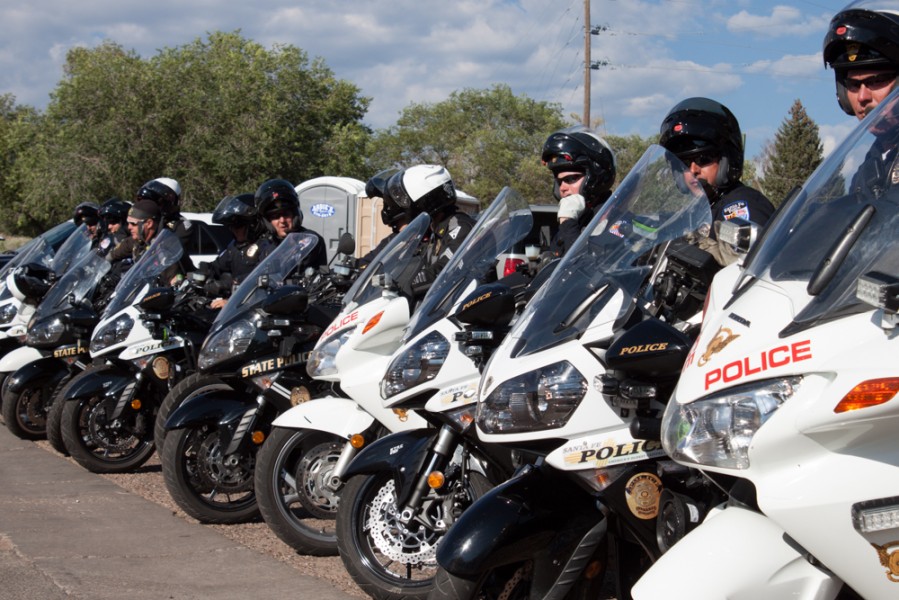
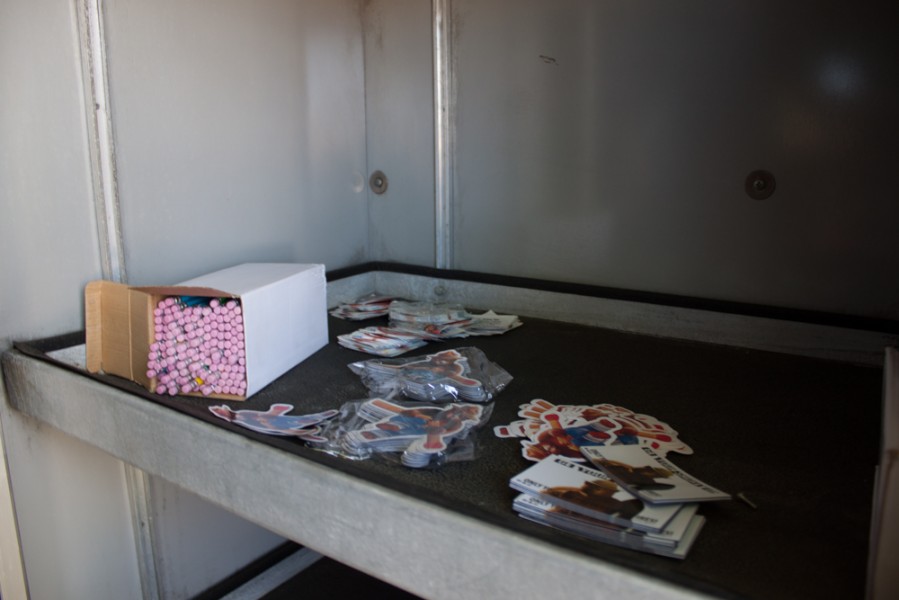


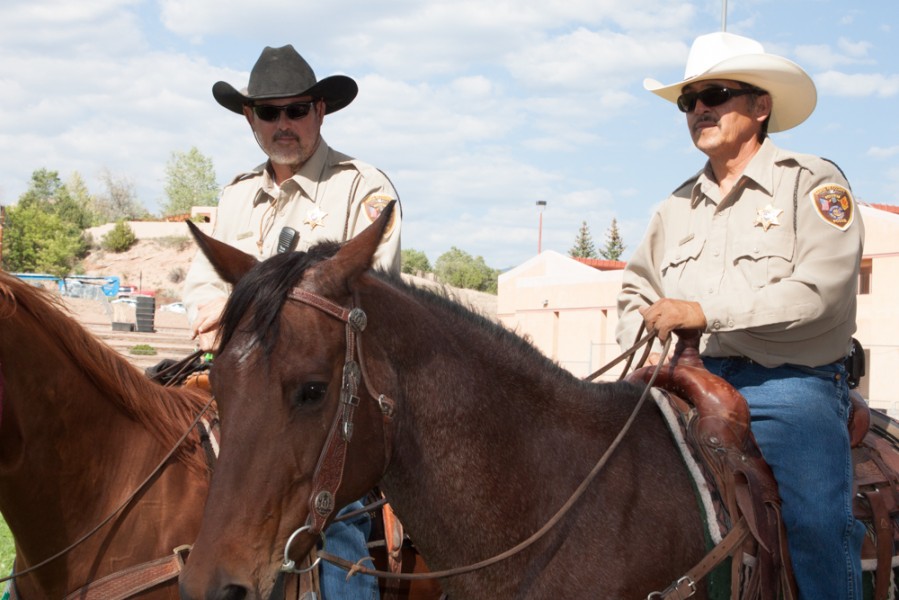
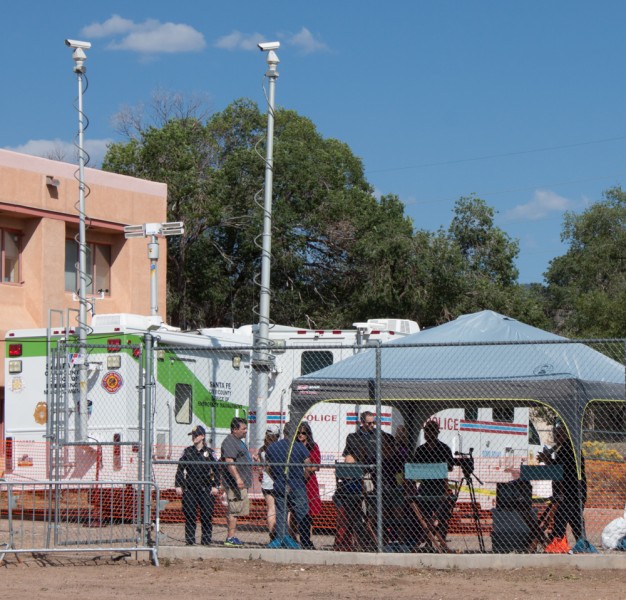
 Jackalope Magazine is the student magazine of Santa Fe University of Art and Design. Building on the interdisciplinary nature of our education, we aim to showcase the talent of our university and character of our city.
Jackalope Magazine is the student magazine of Santa Fe University of Art and Design. Building on the interdisciplinary nature of our education, we aim to showcase the talent of our university and character of our city.
Recent Comments